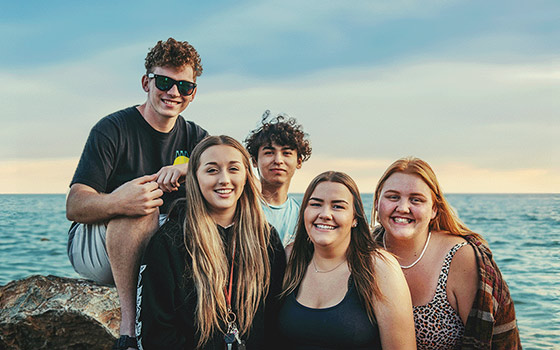Search
Research
‘Mob want to see mob’: Aboriginal and Torres Strait Islander young peoples’ perspective on accessing primary health care services in urban southeast QueenslandThis study examines the enablers and barriers to accessing primary health care services from the perspective of Aboriginal and Torres Strait Islander people aged 15-24 years in urban southeast Queensland.
Research
A call to action: the second Lancet Commission on adolescent health and wellbeingAdolescents are the future leaders of our world. Ensuring their health and wellbeing—now and in the future—is one of the strongest mechanisms available to safeguard the collective future of humanity and to secure a more just society and a healthier and more productive planet.
Research
Cardiometabolic health markers among Aboriginal adolescents from the Next Generation Youth Wellbeing Cohort StudyThe objective of this study was to investigate cardiometabolic health markers among Aboriginal adolescents aged 10-24 years and relationships with age, gender, and body composition.

The Adolescent Health and Wellbeing team works in partnership with young people to understand their priority needs and the best ways to address these. This includes informing evidence-based policies and co-designing accessible and responsive health services.
Research
Pathways to Adolescent Pregnancy in Southeast Asia: Qualitative Evidence From Lived Experiences of Girls in Four CountriesHistorically, adolescent pregnancy has been conceptualized as an outcome of child marriage, but in Southeast Asia, the contexts and drivers of adolescent pregnancy are less well-understood. This study examines the relationship between adolescent pregnancy and child marriage and explores the drivers of pregnancy in Cambodia, Indonesia, Lao People's Democratic Republic and Malaysia among adolescents who have experienced pregnancy.
Research
The Future Healthy Countdown 2030 consensus statement: core policy actions and measures to achieve improvements in the health and wellbeing of children, young people and future generationsThis consensus statement recommends eight high-level trackable policy actions most likely to significantly improve health and wellbeing for children and young people by 2030. These policy actions include an overarching policy action and span seven interconnected domains that need to be adequately resourced for every young person to thrive: Material basics; Valued, loved and safe; Positive sense of identity and culture; Learning and employment pathways; Healthy; Participating; and Environments and sustainable futures.
Research
Cohort profile: The WAACHS Linked Data StudyDespite the volume of accumulating knowledge from prospective Aboriginal cohort studies, longitudinal data describing developmental trajectories in health and well-being is limited.
Research
Enablers and barriers to primary health care access for Indigenous adolescents: a systematic review and meta-aggregation of studies across Australia, Canada, New Zealand, and USAIndigenous adolescents access primary health care services at lower rates, despite their greater health needs and experience of disadvantage. This systematic review identifies the enablers and barriers to primary health care access for Indigenous adolescents to inform service and policy improvements.
Research
Contemporary pathways to adolescent pregnancy in Indonesia: A qualitative investigation with adolescent girls in West Java and Central SulawesiIn the last decade, reduction in adolescent fertility rates in Indonesia has slowed despite national programmes and policies focused on addressing child marriage. Indonesia currently has the highest number of births to adolescent girls aged 15-19 years in Southeast Asia. There is a need to develop a more nuanced understanding of the drivers of adolescent pregnancy in Indonesia to inform programmes and policies tailored to young people's needs and priorities.
Research
Indicators to Measure Adolescent Health at the Country, Regional, and Global Levels: Results of a Five-Year Selection Process by the Global Action for the Measurement of Adolescent HealthTo improve adolescent health measurement, the Global Action for the Measurement of Adolescent health (GAMA) Advisory Group was formed in 2018 and published a draft list of 52 indicators across six adolescent health domains in 2022. We describe the process and results of selecting the adolescent health indicators recommended by GAMA (hereafter, “GAMA-recommended indicators”).
